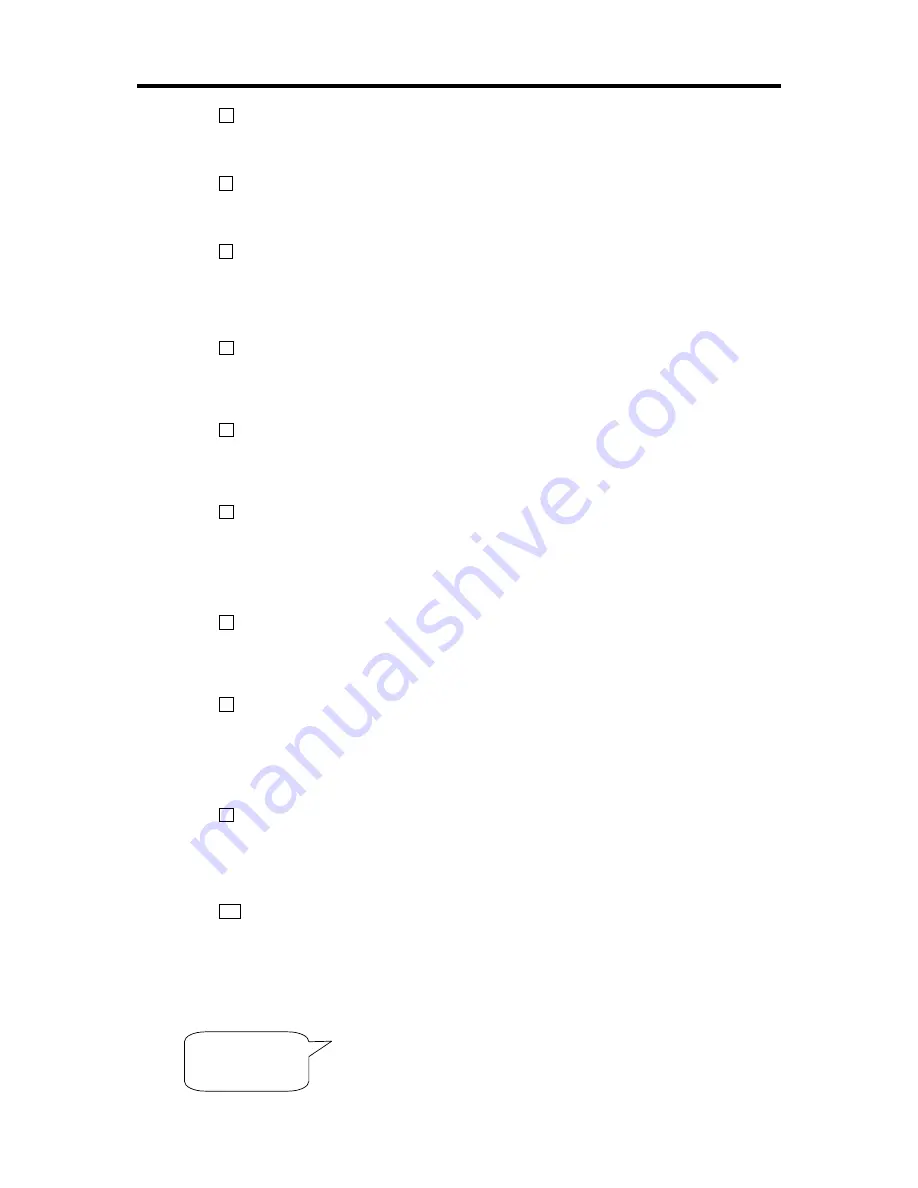
XONE:32
User Guide
5
Quick Start
1
Ensure your safety
Mains voltage is dangerous and can kill. First read and understand the Important
Safety Instructions printed on page 3. Make sure that all equipment in your system is set for your local mains
supply voltage and correctly grounded to ensure your safety. Do not turn anything on until you have checked
your system wiring and control settings.
2
Set all controls to their starting position
Set all FADERS, GAIN, AUX, RESONANCE, HEADPHONES,
BOOTH and MAIN MIX controls minimum (anti-clockwise). Set BAL, EQ and CONTOUR controls to their centre
position. Set CROSSFADER to X (left), VCF slider to 20kHz (right) and CUE/MIX slider to cue (left). Set all
switches to their up position.
3
Plug in your sources and outputs
Plug in two music sources, one to CH1 (X) the other CH3 (Y). Select
the rear panel switches according to line or RIAA turntable source. Plug in your microphone if you are using
one. We recommend you use a cardiod vocal dynamic type with built-in on/off switch. Plug the MIX OUT into
the amplifiers feeding the main speakers, the BOOTH OUT into the amplifiers feeding the local DJ speakers,
and plug in your stereo headphones. Good quality headphones of around 70 ohms impedance are
recommended. It is very important that the amplifier level controls are turned right down at this stage.
4
Turn the system on
Switch on the mixer and music sources first. Check that the CH1 CUE, filter LPF
and CROSSFADE ON indicators are on, the rest off. The LFO ON indicator should be flashing very slowly.
Then switch on the amplifiers with their level controls turned down. The system should be quiet. If you hear
any hum or buzz check the system for bad wiring, ground loops or missing grounds, in particular those
connecting to turntables.
5
Adjust the level trims and cue the channels
Start the music playing and raise the LEVEL trim for each
channel until its meter reads an average ‘0’ with loud moments at ‘+5’. If the red ‘PEAK’ indicator flashes then
back off the trim slightly. Slowly raise the headphones level control. You should hear CH1 CUE feeding the
signal with the CUE/MIX fader set fully left for cue only. Press CH3 CUE to check the CH3 signal. If the music
sounds distorted, bassy or thin check that you have plugged it into the correct Line or Phono inputs.
6
Route the music to the main speakers
With music playing and crossfader set to left hand X position,
raise the CH1 fader to its top ‘0’ position. Next, raise the MAIN MIX rotary master to maximum and check that
the main meters display the music level. These should average ‘0’ with loudest moments up to ‘+5’. If the red
PEAK indicator flashes then back off the channel gain. Now slowly raise the amplifier level trim. You should
start to hear the music through the main speakers. Set the amplifiers for the loudest volume you want to allow
in the room with console meters reading as described above. If you are using a microphone then switch it on
and raise its GAIN control until you hear it in the mix. Turn back the gain if the mic starts to feed back.
7
Route the music to the booth monitor speakers
Now set the BOOTH level rotary to maximum and
slowly turn up the booth amplifier level trim until the monitor is as loud as you need it to be. Setting the levels in
this way prevents the DJ exceeding the allowed maximum by setting all the console faders and masters to
maximum. The meters provide an accurate display of the system capability. Access to the rear panel level trim
controls can be restricted by covering them if needed.
8
Experiment with the level and crossfader controls
With two music sources playing (CH1=X, CH2=Y)
you can experiment with these important performance controls. Adjust the crossfade CONTOUR from a gentle
fade to very steep cut suitable for fast scratch mixing. You can reverse X and Y to suit your mixing style, and
turn the crossfader off if it is not required. The TRANSMUTE button allows fast performance effects,
transforming (muting) the signal if the crossfader is on its side, or punching the signal in if the crossfader is on
the opposite side. Also experiment with the small CUE/MIX fader which lets you preview your mix in the
headphones first.
9
Experiment with the EQ, VCF and LFO effects
Now the creative fun bit. With one channel playing,
listen to the effect of cutting or boosting the three EQ controls. Press the channel FILTER switch to enable the
VCF, experimenting with the FREQUENCY slider, RESONANCE and HPF/BPF/LPF type controls to change
the sound. You can create subtle or dramatically sweeping effects. Watch the meters and pull back the fader if
necessary to ensure you do not exceed the maximum volume allowed. Turn the LFO on and set its speed by
tapping the TEMPO button. The VCF slider now becomes a depth control for LFO to modulate the VCF.
10
Store and recall the user presets
Once you have a VCF/LFO effect you like you can store this as a
user preset to be instantly recalled during performance. Simply press and hold the required preset button for
longer than 2 seconds to store the settings. Tap the button to recall a preset. The preset remembers the VCF
and LFO settings as well as which channels are assigned to the filter.
Important
Note
about
Hearing :
To avoid damage to your hearing do
not operate any sound system at excessively high volume. This also applies to any
close-to-ear monitoring such as headphones. Continued exposure to high volume
sound can cause frequency selective or wide range hearing loss. Make sure that your
system complies with any venue sound level and noise regulations which may apply.
82
!




















